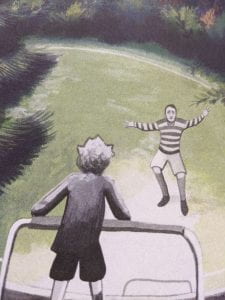This year has proved to be a bumper year for festive stories, whether they are about the traditional holidays, or just about the winter season.
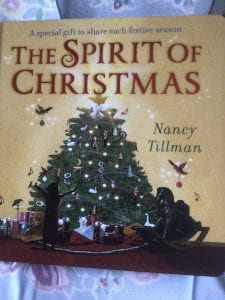
Macmillan, 9781529095708
“The Spirit of Christmas” by Nancy Tillman is a charming board book that embodies the spirit of Christmas. It is written in verse and reads in a similar vein to “The Night before Christmas”. The important bit at the end reminds us that the festive season is all about those we love and sharing that feeling.

Macmillan, 9781529087055
“What the Ladybird heard at Christmas” by Julia Donaldson and Lydia Monks reveals how the ladybird and her friends foil a burglary on Christmas night; despite being very small they are not helpless and turn the tables on the nasty burglars. Yet another great story told in rhyme and part of a series featuring the ladybird.
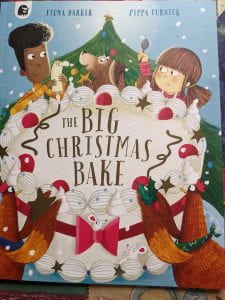
Happy Yak, 978071126828
“The Big Christmas Bake” by Fiona Barker and Pippa Curnick takes “The Twelve Days of Christmas” and turns it in to something quite different. There are children, penguins, dancing hippos and a wide assortment of amusing participants. A brilliant read for younger children
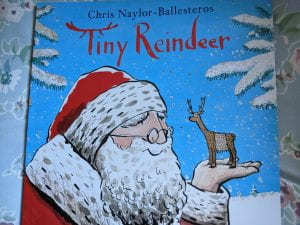
Andersen Press, 9781839130335
“Tiny Reindeer” by Chris Naylor-Ballesteros is a joyous celebration of Christmas which leaves a lovely warm feeling when you read it. Tiny reindeer just wants to be able to help, but he is too small to do any of the jobs the others do. Santa asks him to read through the last of the children’s letters and then Tiny discovers one that he thinks he can help with. We join him as he hopes to make a little girl’s dream come true.
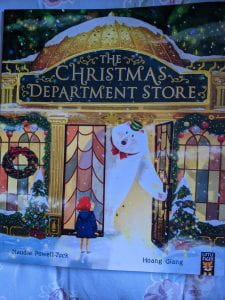
Little Tiger, 9781801040129
“The Christmas Department Store” by Maudie Powell-Tuck and Hoang Giang reminds us that we don’t need to give expensive gifts to show we love our family and friends at this season. When Benji is drawn into the magical store, he discovers the perfect presents for his family and it is all about feelings, memories and showing love. A wonderful message for all of us.
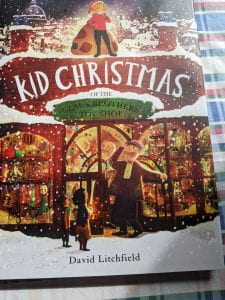
Frances Lincoln, 9780711262935
“Kid Christmas of the Klaus Brothers Toy Shop” by David Litchfield is a brilliant story about the origins of Christmas and how the young Nicky Claus, who works in his uncles’ toy shop wants to bring gifts to children who usually miss out. As always with David Litchfield the illustrations are fabulous and the story is full of magic and Christmas spirit.
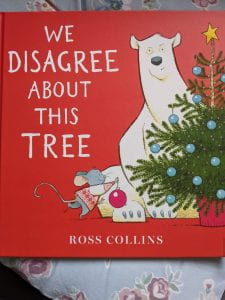
Nosy Crow, 9781839944994
“We disagree about this tree” by Ross Collins features our favourite Mouse and Bear as they try and decide how to celebrate Christmas. Decorating the tree is a bone of contention, with neither of them wanting the same as the other. However, as with all real friendships, they eventually find common ground and enjoy each other’s company around the final tree.
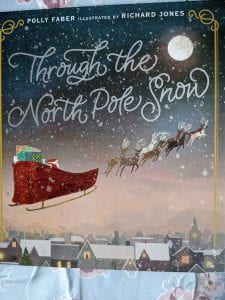
Walker Books, 9781406397673
“Through the North Pole Snow” by Polly Faber and Richard Jones brings us a very different take on the story of Father Christmas. It tells the tale of a young fox trying to find something to eat in the snowy wastes of the far north. When he falls through the snow, he finds himself being rescued by an old man who lives in the snow covered house. Several months follow, until spring arrives and they are able to get out into the newly refreshed landscape. As the year progresses we begin to guess who the old man is, but it is a wonderful surprise when the fox finds himself helping Father Christmas deliver gifts around the world.

Owlet Press, 9781913339494
“The Woodcutter and the Snow Prince” by Ian Eagleton and David Ortu is a stunning interpretation of the Snow Queen, but in this story we have a very inclusive variation on the story. The young woodcutter, Kai, lives alone and spends his days carving wonderful statues, in the hope that people will pass-by and see them, but no one does. Then one Christmas eve he is visited by the magical Snow Prince, who is brought to life for one night every year. What follows is a story of friendship, love and hope. The ending should leave you feeling a warm glow inside, despite the snow and ice.

Owlet Press, 9781913339449
“Where Bjorn belongs” by Samuel Langley-Swain and Mirna Imamovic tells the story of young Arthur who loses his beloved toy polar bear and writes to Father Christmas asking for a new one for Christmas. Magic happens when he discovers a real baby bear in his garden at Christmas and despite his mother’s misgivings they look after the bear, until it starts to be too big. Arthur asks Father Christmas to look after Bjorn and of course his request is granted. However this is just the start of a wonderful friendship between a boy and a bear.
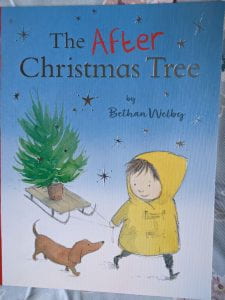
Scallywag Press, 9781912650989
“The After Christmas Tree” by Bethan Welby is the paperback edition of this delightful book about a small tree that is forgotten after the Christmas festivities are ended. Young Brian decides to try and save it, but he needs a bit of magical help from the wildlife to make things happen.
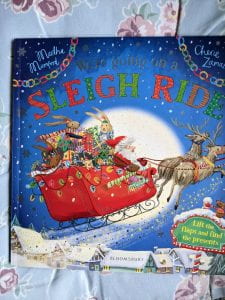
Bloomsbury, 9781526632210
“We’re going on a Sleigh Ride” by Martha Mumford and Cherie Zamazing is a take on the favourite rhyme featuring a bear and a family. This version has Father Christmas and a sleigh full of gifts and toys as they visit children around the world. The story is fast, furious and full of fun, with lots of lift-the-flap options, to see what presents are hidden underneath.
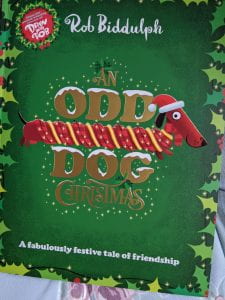
HarperCollins, 9780008413361
“An Odd Dog Christmas” by Rob Biddulph It is Christmas Eve and Odd Dog has still not found a present for her friend. But when she sees a sign about the festivities she follows it and finds herself helping pull the sleigh for Father Christmas, as Dasher is not well enough to be part of the team. Odd Dog also learns that simple gifts ‘from the heart’ are better than expensive gifts. A delightful rhyming story featuring a favourite canine and with the author’s signature illustrations
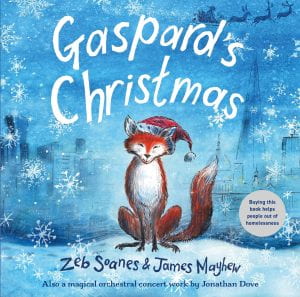
Graffeg, 9781913134846
“Gaspard’s Christmas” by Zeb Soanes and James Mayhew is the fourth in the series about the fox called Gaspard, and based on a city fox who visits the author’s garden. This is a timely reminder that many people face homelessness and hardship, especially at this time of year and we all need to do what we can to help. Beautiful illustrations, as always, from James Mayhew; making this a new classic for this season.
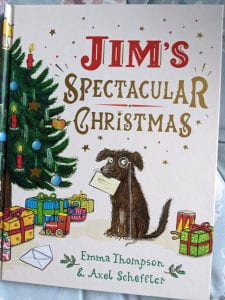
Penguin, 9780241488898
“Jim’s spectacular Christmas” by Emma Thompson and Axel Scheffler is a story aimed at those who are just beginning to read for themselves, or who can enjoy a slightly longer story. Jim, the hero, is a dog who lives at the Victoria and Albert Museum as the unexpected pet of Sir Henry Cole. The illustrations are by the legend that is Axel Scheffler and really bring the Victorian period to life, as we see Jim deliver the first Christmas Card to Queen Victoria. The book is not divided into chapters, but it would be possible to have sections to be read over several days. A lovely story, full of Christmas spirit.
***************************************************
Older Reads
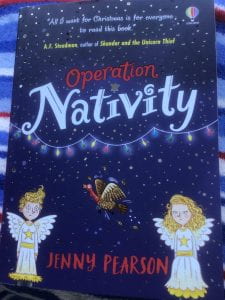
Usborne, 9781803705033
“Operation Nativity” by Jenny Pearson puts a whole new twist on the story of the nativity. When the Angel Gabriel gets things wrong, he ends up in 2022 and so do the shepherds, wise man and even Mary and Joseph. It is up to the children Oscar and Molly to try and find all these characters and somehow get them back to the correct time and place, so that the Christmas story actually takes place. It is a brilliantly funny story that deserves a place in every Christmas collection.
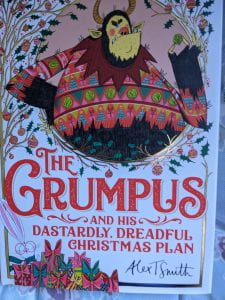
Macmillan, 9781529041613
“The Grumpus: and his Dastardly, Dreadful Christmas Plan” by Alex T Smith takes this anti-hero and help him discover the warmth and meaning of Christmas. This is the third year that Alex T Smith has given us such a fantastic story and he just keeps getting better and better. The illustrations are amazing and the characters will touch your hearts. However, I don’t think that the love of brussel sprouts is going to be increased anytime soon. (they are the Grumpus’s favourite food!!)
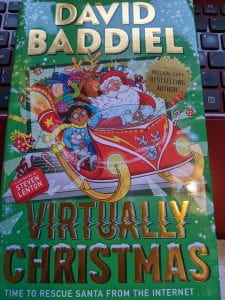
HarperCollins, 9780008334307
“Virtually Christmas” by David Baddiel and Steve Lenton shows what happens when we allow computers and technology to take over our lives. Father Christmas is no longer real and everything is done with AI and robots. How Etta and Monty go on a quest to find the real Santa and bring back the true meaning of Christmas makes for a fun-filled adventure that I loved.
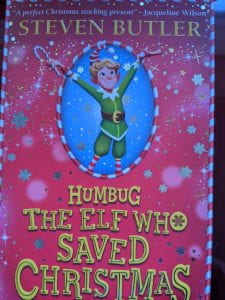
Scholastic, 9780702315879
“Humbug, the Elf that saved Christmas” by Steven Butler turns our idea of Father Christmas and his helpers on its head. Forget about the factory and house from “Santa Claus, the movie”, this North Pole has a hierarchy of elves and when you are part of the ‘poo burning team’ then that is it, for generations and you don’t even get to eat any mince pies. Humbug wants to change things, but it is not going to be an easy task. A brilliant story where the elves have a language all of their own.
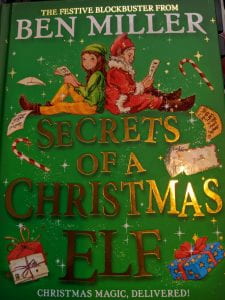
Simon & Schuster, 9781398515819
“Secrets of a Christmas Elf” by Ben Miller is the second story featuring Holly Christmas (yes her dad is Father Christmas) and in this tale Holly finds herself in a race against time, as her father is kidnapped and the festivities are fast approaching. Can she save the day as well as all of her family. This is a fast and furious story full of action, as we follow Holly’s pursuit of the villains.
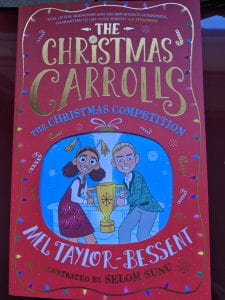
Farshore, 9780755503742
“The Christmas Carrolls: The Christmas Competition” by Mel Taylor-Bessant and Selom Sunu sees the famous Christmas Carrolls in a race to prove that they are the most festive family in the land. This time they are in competition with a family called Klaus, who are determined to prove that they are the most Christmasy. The problem is that they are very wealthy and will stop at nothing to win the competition.

Nosy Crow, 9781839945908
“Murder at Snowfall” by Fleur Hitchcock is the fourth (?) in her series of murder mysteries for middle grade readers. I must admit that I am biased as I have known the author for years, as part of the Bath group of children’s authors. If you love Robin Stevens and Katherine Woodfine then you will definitely enjoy these books.
A couple of other books to have on your radar are these
“Elf Road: An Epic Christmas adventure” by Jacqui Hazell Nowness books, 9780995726864
“The Christmasaurus Cracker” by Tom Fletcher. Puffin, 978-0241624456
A Happy Christmas to everyone.
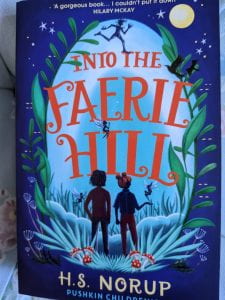 particularly excited when I was asked to join in with this blog tour. I have to say that her writing just keeps getting better , with its ability to immerse the reader in the scenery and atmosphere of the surroundings.
particularly excited when I was asked to join in with this blog tour. I have to say that her writing just keeps getting better , with its ability to immerse the reader in the scenery and atmosphere of the surroundings.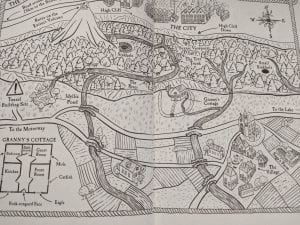
 2018. Originally from Denmark, she has lived in six different countries and now resides in Switzerland with her husband and two teenage sons. She has a Master’s degree in Economics and Business Administration and sixteen years’ experience in corporate marketing strategy and communications. When she’s not writing or reading, she spends her time outdoors either skiing, hiking, walking, golfing or taking photos.
2018. Originally from Denmark, she has lived in six different countries and now resides in Switzerland with her husband and two teenage sons. She has a Master’s degree in Economics and Business Administration and sixteen years’ experience in corporate marketing strategy and communications. When she’s not writing or reading, she spends her time outdoors either skiing, hiking, walking, golfing or taking photos.
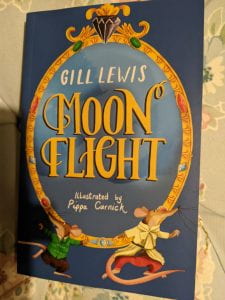 writers have a variety of stories they want to tell. I did enjoy being released from detailed factual research and building the world of the highly anthropomorphised Dockland Rats.
writers have a variety of stories they want to tell. I did enjoy being released from detailed factual research and building the world of the highly anthropomorphised Dockland Rats. Tilbury’s world, following him on his adventures, the twists and turns of the story happening organically as I wrote. I think I needed a change from my usual stories that are based in the real world, and to travel to new unexplored worlds. The infinite realms of the imagination were my portals out of reality. Lockdown also made me feel a little institutionalised, and anxious to venture out when Lockdown was lifted. A trip to London seemed a huge undertaking. I really felt I understood Tilbury’s paradoxical desires for adventure and yet to stay at home and never leave.
Tilbury’s world, following him on his adventures, the twists and turns of the story happening organically as I wrote. I think I needed a change from my usual stories that are based in the real world, and to travel to new unexplored worlds. The infinite realms of the imagination were my portals out of reality. Lockdown also made me feel a little institutionalised, and anxious to venture out when Lockdown was lifted. A trip to London seemed a huge undertaking. I really felt I understood Tilbury’s paradoxical desires for adventure and yet to stay at home and never leave.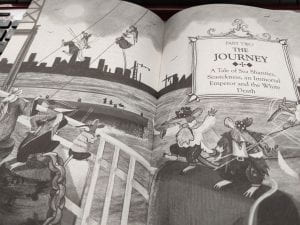 turn up before dark or for tea. I think parents are more worried by stranger danger and dangerous traffic on roads these days. But also sadly, a problem of modern life, especially in urban areas is that are fewer places to play outside as many places may be developed for housing. My own children grew up in a rural area, but the small roads were so busy, and used as cut-throughs for local traffic, that cycling and walking were not very safe. Like all mothers, Tilbury’s Ma wants to protect her little son as much as she can, but of course, she cannot protect him forever. She must be brave and let him begin to find his way in the world, letting him test his own boundaries. Even Tilbury’s Pa must remind Ma that they were young rats once in search of adventure. But Ma will always there for Tilbury with a hot dinner and a warm bed if he should need it.
turn up before dark or for tea. I think parents are more worried by stranger danger and dangerous traffic on roads these days. But also sadly, a problem of modern life, especially in urban areas is that are fewer places to play outside as many places may be developed for housing. My own children grew up in a rural area, but the small roads were so busy, and used as cut-throughs for local traffic, that cycling and walking were not very safe. Like all mothers, Tilbury’s Ma wants to protect her little son as much as she can, but of course, she cannot protect him forever. She must be brave and let him begin to find his way in the world, letting him test his own boundaries. Even Tilbury’s Pa must remind Ma that they were young rats once in search of adventure. But Ma will always there for Tilbury with a hot dinner and a warm bed if he should need it.

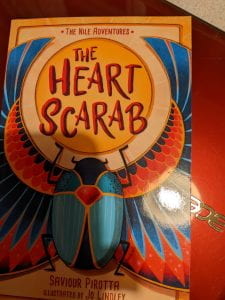
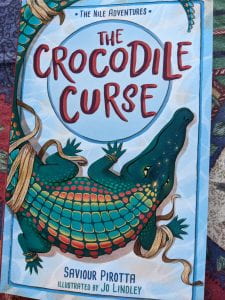
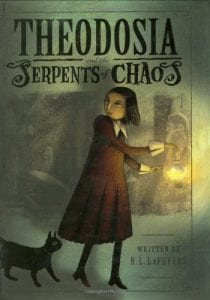
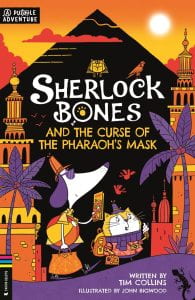
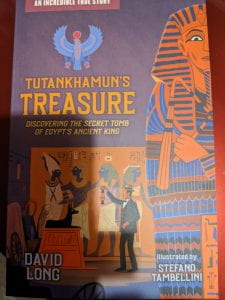
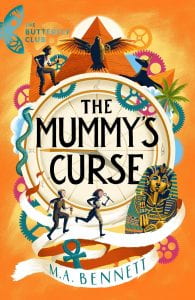
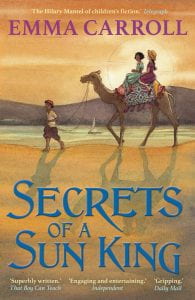
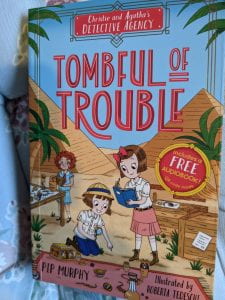

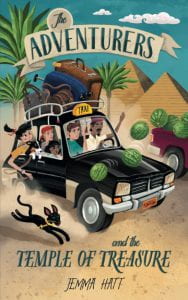
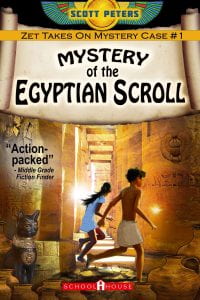
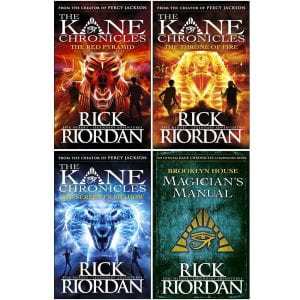
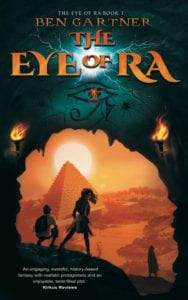
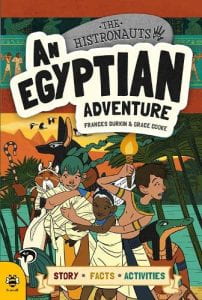

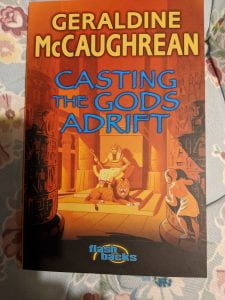
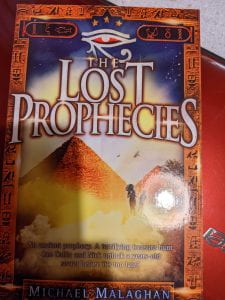
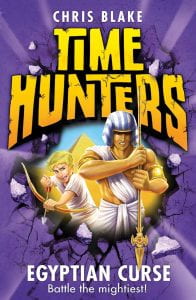
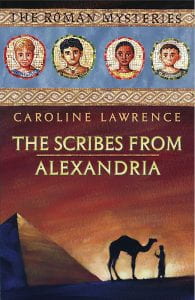
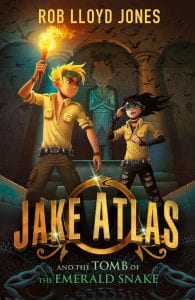
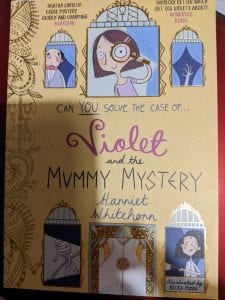






















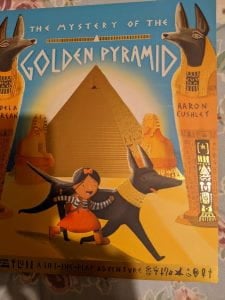 Ancient Egypt. When Sophie moves to Egypt, she is surprised to find a dog in her bedroom, but this is a talking dog who gives her a quest to find and return four lost amulets to the tomb of King Nebra. It is full of action and humour and will appeal to all KS1 children. The illustrations are excellent, with some great ‘lift-the-flap’ elements.
Ancient Egypt. When Sophie moves to Egypt, she is surprised to find a dog in her bedroom, but this is a talking dog who gives her a quest to find and return four lost amulets to the tomb of King Nebra. It is full of action and humour and will appeal to all KS1 children. The illustrations are excellent, with some great ‘lift-the-flap’ elements.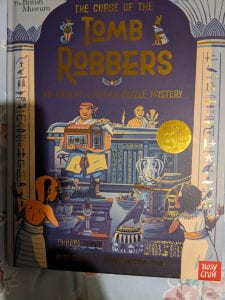 intrigue and tomb robbery, in which two children are able to foil the robbers and bring them to justice. It highlights the importance of reading the hieroglyphs and also the respect that was given to the dead, by the Egyptians.
intrigue and tomb robbery, in which two children are able to foil the robbers and bring them to justice. It highlights the importance of reading the hieroglyphs and also the respect that was given to the dead, by the Egyptians.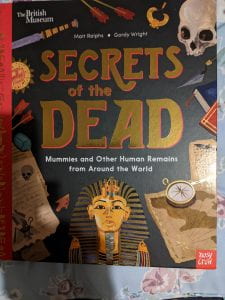 British Museum and looks at the various forms of mummification found around the world. Egypt is only one of those places, but the chapter in this book looks at the methods used and at some famous examples such as Tutankhamun and Ramses II. The book makes for a fascinating read.
British Museum and looks at the various forms of mummification found around the world. Egypt is only one of those places, but the chapter in this book looks at the methods used and at some famous examples such as Tutankhamun and Ramses II. The book makes for a fascinating read.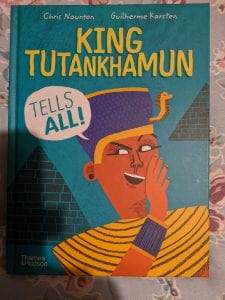 “King Tutankhamun tells all” by Chris Naunton and Guilherme Karsten is written by one of our most well-known and knowledgeable Egyptologists. The illustrations are cartoon style and full of colour and is written in the form of a memoir by the dead Pharaoh. There is a great deal of humour in the way that it is written, but it is still full of information about the king and also Ancient Egypt itself.
“King Tutankhamun tells all” by Chris Naunton and Guilherme Karsten is written by one of our most well-known and knowledgeable Egyptologists. The illustrations are cartoon style and full of colour and is written in the form of a memoir by the dead Pharaoh. There is a great deal of humour in the way that it is written, but it is still full of information about the king and also Ancient Egypt itself.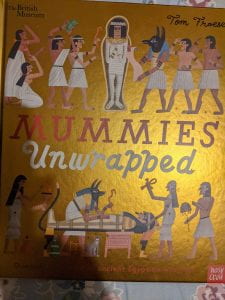 British Museum and is a fascinating look at the various processes that a mummy underwent; asking many of the questions that young people want to know.. The illustrations are bright clear and have elements of humour, which really adds to the enjoyment. The cover is gold, which will add to the attraction for the intended audience.
British Museum and is a fascinating look at the various processes that a mummy underwent; asking many of the questions that young people want to know.. The illustrations are bright clear and have elements of humour, which really adds to the enjoyment. The cover is gold, which will add to the attraction for the intended audience.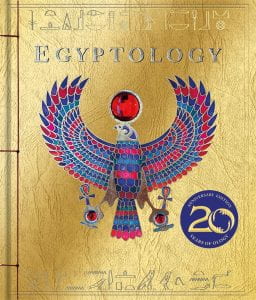 “Egyptology” by Dugald Steer is the first in a series of truly sumptuous books, full of illustrations, lift the flaps, added artifacts and information about a range of topics. this book has a gold cover and really gives the reader a sense of the grandeur that was found in Egyptian tombs. Whilst this is not a new title, it is one that should be the basis of anyone’s collection about Egypt.
“Egyptology” by Dugald Steer is the first in a series of truly sumptuous books, full of illustrations, lift the flaps, added artifacts and information about a range of topics. this book has a gold cover and really gives the reader a sense of the grandeur that was found in Egyptian tombs. Whilst this is not a new title, it is one that should be the basis of anyone’s collection about Egypt.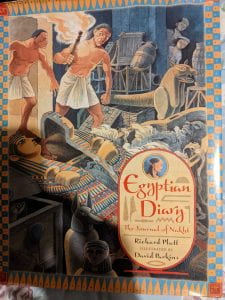 “Egyptian diary: The Journal of Nakht” by Richard Platt and David Parkins is the story of a young boy living in Memphis with his family and how he helps foil a gang of tomb robbers and eventually get to meet the Pharaoh Hatshepsut, only to discover that they are a woman (one of very few female pharaohs). this is a large size book with some fabulous illustrations. Since its publication in 2005 it has become a staple of all school libraries.
“Egyptian diary: The Journal of Nakht” by Richard Platt and David Parkins is the story of a young boy living in Memphis with his family and how he helps foil a gang of tomb robbers and eventually get to meet the Pharaoh Hatshepsut, only to discover that they are a woman (one of very few female pharaohs). this is a large size book with some fabulous illustrations. Since its publication in 2005 it has become a staple of all school libraries.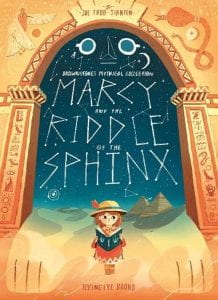 “Marcy and the Riddle of the Sphinx” by Joe Todd Stanton is the second tale in the “Brownstone’s Mythical collection” series and follows the adventures of Marcy, the daughter of the original hero Arthur, as she attempts to save her father from the clutches of the Great Sphinx. Children will love the graphic novel format and the fast pace of the action.
“Marcy and the Riddle of the Sphinx” by Joe Todd Stanton is the second tale in the “Brownstone’s Mythical collection” series and follows the adventures of Marcy, the daughter of the original hero Arthur, as she attempts to save her father from the clutches of the Great Sphinx. Children will love the graphic novel format and the fast pace of the action.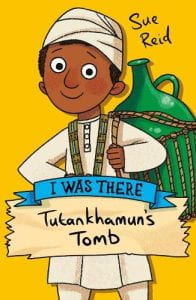 audiences. It is based on the fact that a young boy was involved in finding the stairs which led to the tomb discovery. it is full of action, villains and of course introduces the audience to Howard Carter and his patron Lord Caernarvon.
audiences. It is based on the fact that a young boy was involved in finding the stairs which led to the tomb discovery. it is full of action, villains and of course introduces the audience to Howard Carter and his patron Lord Caernarvon.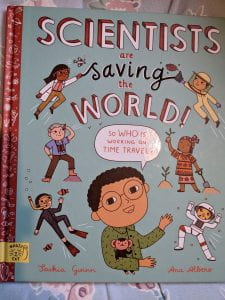 information on how to find them. That is why National Non-fiction November is so valuable and we should all be very grateful to the Federation of Children’s Book Groups, for all of the work they do in promoting this event.
information on how to find them. That is why National Non-fiction November is so valuable and we should all be very grateful to the Federation of Children’s Book Groups, for all of the work they do in promoting this event. heard of an Acoustic Biologist before? The book is laid out in a very clear way, with each profession getting a double page spread. The book is based on the idea of a child asking their parent about scientists and what they do, with the mother then talking through a wide range of subjects that are being studied today. The illustrations are in variably sized boxes ( as with graphic novels and comics), so that it is easy to follow and most children will be familiar with the format. The illustrations are brightly coloured and almost cartoon like in their simplicity, but this makes it easy for the very young reader to understand what is going on. The text is also very simple and whilst many children will read this with an adult, it is also suitable for them to read for themselves, especially with the support of the graphics.
heard of an Acoustic Biologist before? The book is laid out in a very clear way, with each profession getting a double page spread. The book is based on the idea of a child asking their parent about scientists and what they do, with the mother then talking through a wide range of subjects that are being studied today. The illustrations are in variably sized boxes ( as with graphic novels and comics), so that it is easy to follow and most children will be familiar with the format. The illustrations are brightly coloured and almost cartoon like in their simplicity, but this makes it easy for the very young reader to understand what is going on. The text is also very simple and whilst many children will read this with an adult, it is also suitable for them to read for themselves, especially with the support of the graphics.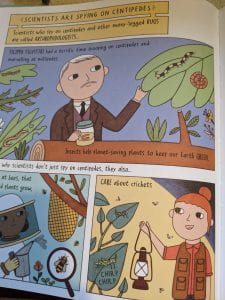 lived at different periods in our history. There are many that I have not heard of before, as well as some that have become more prominent in the last few years; thanks to the growth of biographies in the children’s book world. People like David Attenborough are world famous, but I was happy to see another scientist that I became aware of as a child. At the end of the 1950s, before Jacques Cousteau came on the scene , we were introduced to the wonders of the ocean by the divers, Hans and Lotte Hass, so it is lovely to see a mention of Hans in this book. For the young readers reading and listening to the content of this book, these details can act as a springboard towards discovering more about these, often pioneering, scientists.
lived at different periods in our history. There are many that I have not heard of before, as well as some that have become more prominent in the last few years; thanks to the growth of biographies in the children’s book world. People like David Attenborough are world famous, but I was happy to see another scientist that I became aware of as a child. At the end of the 1950s, before Jacques Cousteau came on the scene , we were introduced to the wonders of the ocean by the divers, Hans and Lotte Hass, so it is lovely to see a mention of Hans in this book. For the young readers reading and listening to the content of this book, these details can act as a springboard towards discovering more about these, often pioneering, scientists.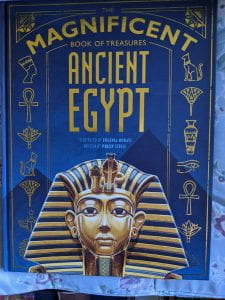 November and secondly to commemorate the centenary of the discovery of Tutankhamun’s tomb by Howard Carter and Lord Caernarvon. Of course I was absolutely delighted to do so, mainly because I love Ancient Egypt and as a child in the 1960s I had ambitions to be an Egyptologist. This year also sees the bicentenary of Champollion’s first work which opened a window on how we understand hieroglyphs, so all told this is a very important year for understanding and celebrating the wonder that is Egypt. This led to an explosion in interest from museums and collectors in Europe and then the USA What this really shows is how items have been transported across the world in the last two hundred years, finding homes from the USA to Europe, but also thankfully being cared for in Egypt itself. The new Grand Egyptian Museum in Cairo is scheduled to open in November 2022, to coincide with the centenary commemoration. It will be the largest archaeological museum in the world and I would love to go back to Egypt and visit it.
November and secondly to commemorate the centenary of the discovery of Tutankhamun’s tomb by Howard Carter and Lord Caernarvon. Of course I was absolutely delighted to do so, mainly because I love Ancient Egypt and as a child in the 1960s I had ambitions to be an Egyptologist. This year also sees the bicentenary of Champollion’s first work which opened a window on how we understand hieroglyphs, so all told this is a very important year for understanding and celebrating the wonder that is Egypt. This led to an explosion in interest from museums and collectors in Europe and then the USA What this really shows is how items have been transported across the world in the last two hundred years, finding homes from the USA to Europe, but also thankfully being cared for in Egypt itself. The new Grand Egyptian Museum in Cairo is scheduled to open in November 2022, to coincide with the centenary commemoration. It will be the largest archaeological museum in the world and I would love to go back to Egypt and visit it.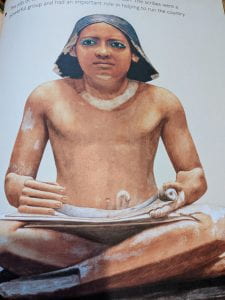 many of the images date from that dynasty and the following one, there are also beautiful artifacts from 800 years earlier and also much later. One of the objects that I am particularly fond of is a small statue of a seated scribe, which although it is nearly 4500 years old is stunningly modeled and gives a feeling of great calm and character. It seems strange that whilst Egyptian wall carvings and paintings appear very flat, the sculptures are far more lifelike, even at this early stage of the civilization.
many of the images date from that dynasty and the following one, there are also beautiful artifacts from 800 years earlier and also much later. One of the objects that I am particularly fond of is a small statue of a seated scribe, which although it is nearly 4500 years old is stunningly modeled and gives a feeling of great calm and character. It seems strange that whilst Egyptian wall carvings and paintings appear very flat, the sculptures are far more lifelike, even at this early stage of the civilization.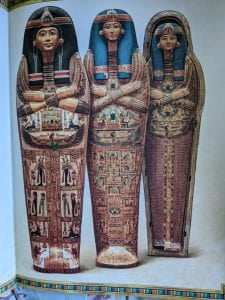 Another set of images that are really stunning are the set of three inter-stacking coffins for a princess Henettawy. She lived about 400 years after Tutankhamun and as a member of the royal family she served as an important priestess of Amun-Ra. In order to find out more about this lady, I visited the website of the Metropolitan Museum of Art at
Another set of images that are really stunning are the set of three inter-stacking coffins for a princess Henettawy. She lived about 400 years after Tutankhamun and as a member of the royal family she served as an important priestess of Amun-Ra. In order to find out more about this lady, I visited the website of the Metropolitan Museum of Art at 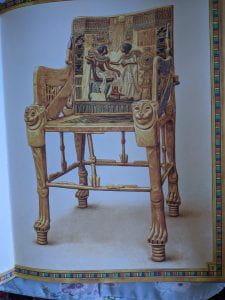 am happy to say that I have actually seen it when we visited Egypt in the early 1990s. The throne of Tutankhamun is absolutely exquisite from all angles; however, it is the back rest that really draws everyone’s’ attention. The image of the young pharaoh and his wife is so beautifully portrayed, with a real sense of the close relationship that they appeared to have. Whilst this type of imagery became quite normal during the reign of his father Akhenaten, it is far less formal than is usually found in most Egyptian art work and definitely when portraying royalty.
am happy to say that I have actually seen it when we visited Egypt in the early 1990s. The throne of Tutankhamun is absolutely exquisite from all angles; however, it is the back rest that really draws everyone’s’ attention. The image of the young pharaoh and his wife is so beautifully portrayed, with a real sense of the close relationship that they appeared to have. Whilst this type of imagery became quite normal during the reign of his father Akhenaten, it is far less formal than is usually found in most Egyptian art work and definitely when portraying royalty.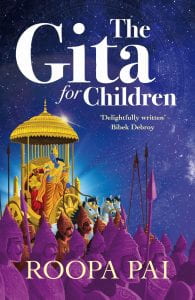 Why did you write The Gita for Children, and what age is it aimed at?
Why did you write The Gita for Children, and what age is it aimed at?
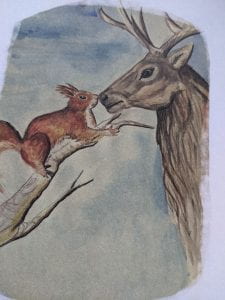 difficult time, but for children, whether very small or older, it has been even more difficult as they were only just beginning to learn how to integrate with other children; both at nursery and then at primary school. For those ho are just that little bit older, it can be even more of an issue. After all, they had just got used to school and having new friends and then suddenly they were cut off from this contact and often restricted to a very small space as well; those living in small flats would have had a particularly difficult time. This charming little book follows Little Squirrel as he gradually learns to renew his contact with the world around him and finds that the other animals are friendly and caring and want to help him get used to the wood he lives in.
difficult time, but for children, whether very small or older, it has been even more difficult as they were only just beginning to learn how to integrate with other children; both at nursery and then at primary school. For those ho are just that little bit older, it can be even more of an issue. After all, they had just got used to school and having new friends and then suddenly they were cut off from this contact and often restricted to a very small space as well; those living in small flats would have had a particularly difficult time. This charming little book follows Little Squirrel as he gradually learns to renew his contact with the world around him and finds that the other animals are friendly and caring and want to help him get used to the wood he lives in.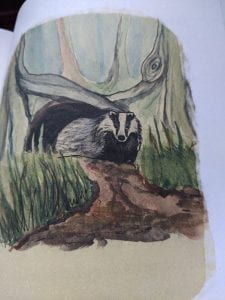 nervous about going outside again after such a long time tucked up in his nest. The more Little Squirrel thinks about venturing down to the forest floor, the more he worries about the unknown and what might be waiting for him….The past few years have certainly had an impact on everyone’s wellbeing and mental health, with research identifying that anxiety in children ages 3-17 have increased over the last five years.
nervous about going outside again after such a long time tucked up in his nest. The more Little Squirrel thinks about venturing down to the forest floor, the more he worries about the unknown and what might be waiting for him….The past few years have certainly had an impact on everyone’s wellbeing and mental health, with research identifying that anxiety in children ages 3-17 have increased over the last five years. follows him on his adventures through the forest. As little squirrel encounters new friends on his journey we learn valuable strategies to equip us with skills that will benefit us our whole lives. We engage with anxiety psychoeducation*, helping the reader to understand anxiety what it is and how it can physically present. Distraction techniques that helps to take your mind off worried thoughts. Coping strategies, relaxation techniques and CBT** Thought challenging skills. These complex issues are told gently in a child like way and through the engagement of the characters in the forest that little squirrel meets. The tale invites the reader to meet Wren and Snuffly Hedgehog, Grey Rabbit to Mister Fox and from Old Badger to Great Stag. All these techniques can be useful in helping children manage any worried thoughts and feelings they may be having. It is the perfect book for a parent and child to sit down together and to use as a springboard for difficult conversation. Its also a great resource for teachers to use in the classroom to help children learn mindful techniques which can support them through the rest of their lives.
follows him on his adventures through the forest. As little squirrel encounters new friends on his journey we learn valuable strategies to equip us with skills that will benefit us our whole lives. We engage with anxiety psychoeducation*, helping the reader to understand anxiety what it is and how it can physically present. Distraction techniques that helps to take your mind off worried thoughts. Coping strategies, relaxation techniques and CBT** Thought challenging skills. These complex issues are told gently in a child like way and through the engagement of the characters in the forest that little squirrel meets. The tale invites the reader to meet Wren and Snuffly Hedgehog, Grey Rabbit to Mister Fox and from Old Badger to Great Stag. All these techniques can be useful in helping children manage any worried thoughts and feelings they may be having. It is the perfect book for a parent and child to sit down together and to use as a springboard for difficult conversation. Its also a great resource for teachers to use in the classroom to help children learn mindful techniques which can support them through the rest of their lives.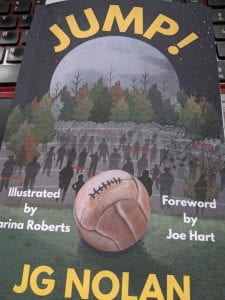 subject really takes me out of my comfort zone. Football has always been at the periphery of my life, starting with having to keep track of the football results on a Saturday afternoon for one of my aunts. Going to library school in Manchester also had an impact as everyone seemed to support United or City. When I lived in Scotland I was aware of the teams but did not really know them and so my slight links to the sport carried on. Over the years we have had a large number of books about football, but they tend to be about fictional clubs and players; this is different as it is based around one of the most iconic clubs in the UK.
subject really takes me out of my comfort zone. Football has always been at the periphery of my life, starting with having to keep track of the football results on a Saturday afternoon for one of my aunts. Going to library school in Manchester also had an impact as everyone seemed to support United or City. When I lived in Scotland I was aware of the teams but did not really know them and so my slight links to the sport carried on. Over the years we have had a large number of books about football, but they tend to be about fictional clubs and players; this is different as it is based around one of the most iconic clubs in the UK.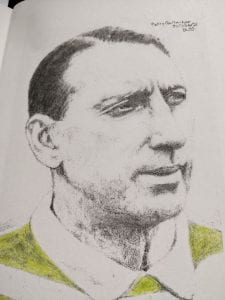 who tells him that “it is never over”. The story follows Robbie as he starts the long road to recovery, with the help of his friend Jamie (a girl) and a mysterious figure who shows him ways to train and improve his strength and stamina. The setting is Glasgow and Robbie is a tremendous fan of Celtic football club, so it is not difficult to believe that it is the spirit of Patsy Gallacher, on of the team’s greatest ever players, who is helping Robbie achieve his dream.
who tells him that “it is never over”. The story follows Robbie as he starts the long road to recovery, with the help of his friend Jamie (a girl) and a mysterious figure who shows him ways to train and improve his strength and stamina. The setting is Glasgow and Robbie is a tremendous fan of Celtic football club, so it is not difficult to believe that it is the spirit of Patsy Gallacher, on of the team’s greatest ever players, who is helping Robbie achieve his dream.